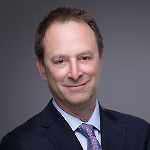Zadroga Act • Victim Compensation Fund • WTC Health Program
What is the Zadroga Act and What Does it Cover?
The Zadroga Act is the shorthand many people use to refer to the James Zadroga 9/11 Health and Compensation Act. This bill, signed into law in 2010, established the two federal health programs that serve the 9/11 community. The programs were initially only funded for five years, but the health program was permanently extended in 2015 and the VCF was permanently extended in 2019. Members of the 9/11 community are now protected for life.
The 2010 and 2015 bills were named for James Zadroga, an NYPD officer who was sick after participating in rescue operations at World Trade Center. He passed away of 9/11-related pulmonary fibrosis in 2006. He was the first NYPD officer whose death was directly attributed to exposure to the WTC toxic dust. An autopsy revealed ground glass, asbestos, chromium, lead and benzene in his lung tissue. The 2019 renewal bill saw the addition of two new names to the bill’s title, FDNY’s Ray Pfeiffer and NYPD’s Louis Alvarez. These two heroes not only answered the call on 9/11 but also fought valiantly in Washington to secure funding for the Zadroga programs, even as their personal health faded. Pfeiffer passed in 2017 and Alvarez passed in 2019, but not before travelling to Washington in his final days to provide key testimony to Congress which galvanized support for the passage of the 2019 VCF renewal.
The Zadroga Act programs provide medical treatment and compensation for people with illnesses related to their exposure at the WTC or Pentagon sites. The first of these programs is the World Trade Center Health Program, which provides nationwide health monitoring and treatment to members of the 9/11 community. Not only do police, firefighters, and other rescue workers qualify for care for their 9/11-related illnesses at no cost, but students, residents, and local office workers who were below Houston Street or in Western Brooklyn on or after September 11th, 2001 can also access no cost health care as well. The program is operated by the National Institute for Occupational Safety and Health and has several “Centers of Excellence” in the New York City area. Care is also available nationwide through the Nationwide Provider Network, which matches non New York 9/11 responders and survivors with doctors in their area.
The second of the Zadroga programs is one you no doubt heard about in the news, thanks to 9/11 Community advocate and celebrity Jon Stewart. The Victim Compensation Fund (VCF) is operated by the Department of Justice. It provides compensation to anybody who has a physical illness related to 9/11. These payouts can provide financial security to those who are disabled and to families whose loved ones have passed away. The VCF is available to anybody who was below Canal Street on or during parts of the 8 months after September 11th, 2001, and who has a physical illness certified by the World Trade Center Health Program. Claims can, of course, also be amended if new illnesses develop. The VCF has been extended to 2090!
We can help you apply to both of these programs. Contact us for help with the process.

2 replies on “What is the Zadroga Act and What Does it Cover?”
I started working in the Verizon Bldg on Pearl Street in Dec 2002 . Shortly after I developed Asthma, thyroid cancer & breast cancer twice. Several of my coworkers also developed breast cancer, one of whom died from it. Also, one has developed colin cancer. There are probably others I do not know about. Do we qualify for the victim’s compensation fund ?
Hi Mary Jane, Thank you for sharing. We’re sorry to hear about your health. Someone from our office will reach out to discuss your situation in greater detail. Take care.